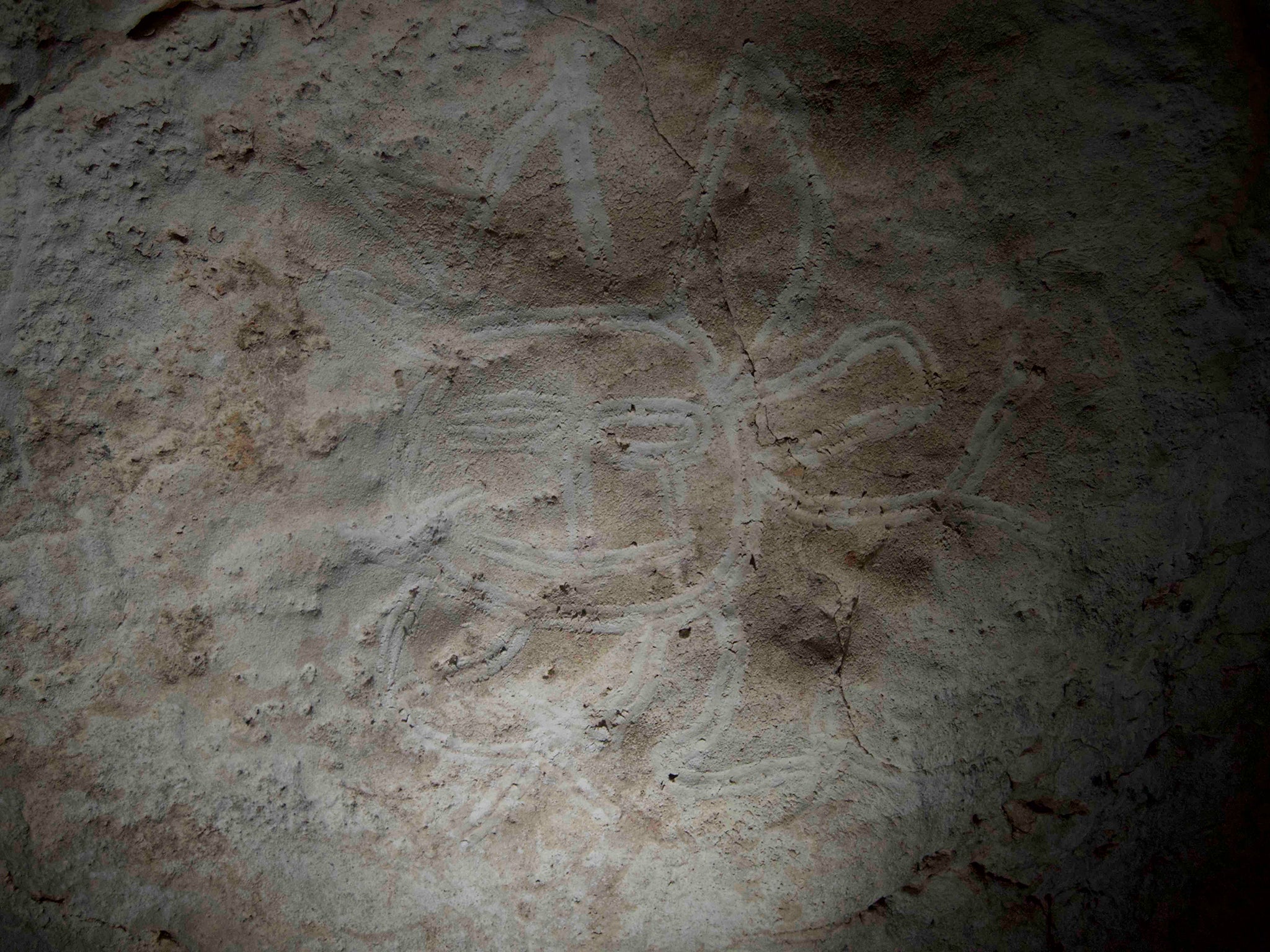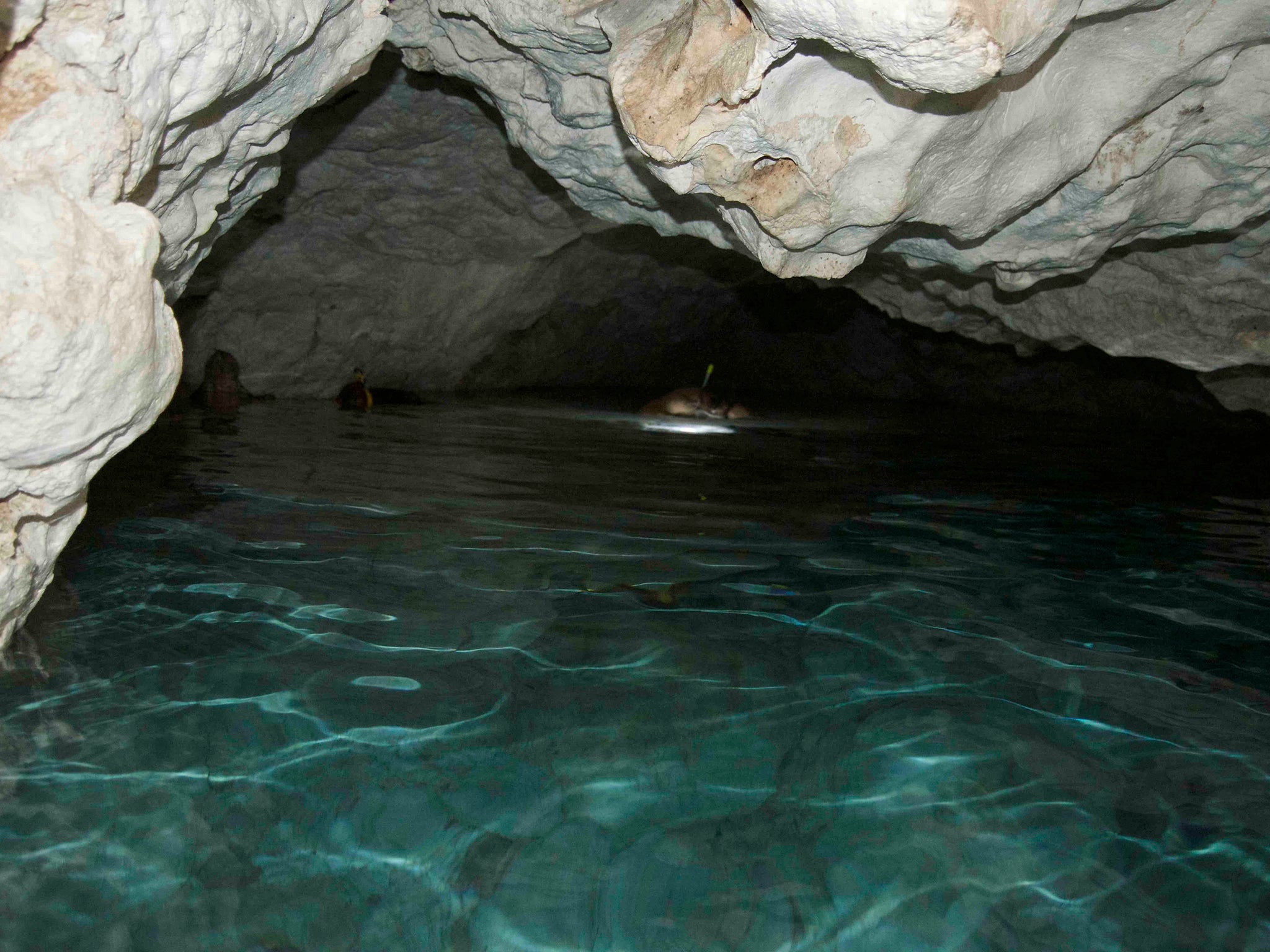Long-lost art of a vanished civilization revealed by British archaeologists on uninhabited island in Caribbean
Paintings from 14th century Tainos culture found in 30 caves on uninhabited island of Mona

Your support helps us to tell the story
From reproductive rights to climate change to Big Tech, The Independent is on the ground when the story is developing. Whether it's investigating the financials of Elon Musk's pro-Trump PAC or producing our latest documentary, 'The A Word', which shines a light on the American women fighting for reproductive rights, we know how important it is to parse out the facts from the messaging.
At such a critical moment in US history, we need reporters on the ground. Your donation allows us to keep sending journalists to speak to both sides of the story.
The Independent is trusted by Americans across the entire political spectrum. And unlike many other quality news outlets, we choose not to lock Americans out of our reporting and analysis with paywalls. We believe quality journalism should be available to everyone, paid for by those who can afford it.
Your support makes all the difference.Five centuries after it was largely obliterated by the Spanish conquistadors, the long-lost culture of a vanished civilisation is being rediscovered by British and local archaeologists.
Before the Spanish conquest of the islands of the Caribbean, the region's major indigenous people was a culture known as the Tainos.
British and Puerto Rican archaeologists are now rediscovering the spiritual heart of that culture – the world’s largest concentration of Taino art, located on a tiny and remote uninhabited island called Mona, midway between Puerto Rico and the Dominican Republic.
So far, literally thousands of previously unknown Taino drawings and paintings have been found in 30 caves on the island. More than 100 caves have yet to be explored – and it’s likely that many more artworks will be discovered.
On-going scientific tests suggest that most of the drawings and paintings probably date from the 14th and 15th centuries. They portray a bewildering variety of often hybrid animal and human faces, co-mingled and intertwined with seemingly abstract geometric and curvilinear patterns.
The research – by archaeologists from Leicester and Cambridge universities, the British Museum and from the Centre for Advanced Studies of Puerto Rico – is also revealing the techniques used to make the artworks. The paintings were made with bat excrement which had over many decades absorbed naturally-occurring yellow, brown and red minerals from the cave floors. Sometimes plant resin was added to help the bat excrement (guano) paint adhere to the walls of the caves. Other images were created merely through the use of charcoal crayons.
But the great majority of the artworks were made simply by the artists dragging their fingers across the soft surface of the cave walls. By doing so, they removed the darker-coloured 2-3 millimetre thick surface layer of naturally corroded calcite (known to cave specialists as ‘moon milk’), thereby exposing the caves lighter-coloured solid rock.
The technique was simple yet effective, given that these finger drawings have survived for more than 500 years.
Mona’s cave art is not just the largest concentration of Taino art in the world. It may also reveal much about the role of this remote island in pre-Columbian times.

Caves were absolutely central to Taino religion and society. According to Taino mythology, caves were where the first humans came from. They were also the places where the sun and the moon were originally born. Additionally, caves were frequently used as human burial places – and were seen as locations were ancestral spirits and deities could be communed with.
It is perhaps significant that the island of Mona not only has the largest single concentration of Taino art, but that it also has one of the largest and densest concentrations of caves in the entire Caribbean region.
It is therefore probable that the island had a much wider cultural importance beyond its shores – and likely had a religious, ceremonial and ritual importance for people in a broader stretch of the central Caribbean, especially what is now Puerto Rico and the Dominican Republic. Interestingly it has precolombian archaeological evidence linking it culturally to both places.
The surreal – indeed often dreamlike – nature of Mona’s cave art could well be courtesy of ancient hallucinogenic drugs.
One very early 16th century Spanish observer described Taino ceremonies in which participants went into trances through the consumption of special plant seeds. During these hallucinogenically-powered proceedings, Taino shamans sought to communicate with their community's ancestors and deities.
The British and local archaeological work on Mona, carried out in conjunction with Puerto Rico's Department of the Environment and the Institute of Puerto Rican Culture, is of great importance – not just in helping the world in general to rediscover the remarkable art of a long-lost culture, but also in helping the descendants of the Taino to learn more about their origins.

The Taino were the very first major New World culture that Columbus interacted with. Because he did not know that the American continents existed, he thought he was in Asia – and called the local people “Indians”. The name stuck – and was subsequently applied to all New World peoples.
Before the Spanish conquest (following Columbus’s arrival in 1492), there were, throughout the Caribbean, well over one million Tainos, said by the Spanish to have been organised in literally dozens of mini-states, ruled by paramount chieftains, known as caciques.
But, within one or two generations of the conquest, most Taino political organisation and society had collapsed. Through disease, enslavement, execution, war and famine the Taino population was reduced by 80-90 per cent. Taino men were enslaved and forced to work in mines and plantations. Taino women were taken by Spanish men as wives or concubines – or were forced into servitude and often raped.
Taino identity was largely despised, abandoned and forgotten for half a millennium. But now, in Puerto Rico, Cuba and the Dominican Republic, the descendants of the Taino (mostly people of mixed Taino, Spanish and African ancestry) are re-claiming their long-lost Taino heritage and seeking to reconnect with and learn more about their indigenous roots. Some aspects of original Taino culture have survived in some areas - including culinary, agricultural and religious traditions.
Knowledge about the Taino civilisation is also important for the rest of the world – not least because of the largely unappreciated Taino contribution to modern international culture.
Europeans first learnt about rubber, tobacco, sweet potatoes, sweet corn and many fruits from the Tainos – and indeed the modern English words canoe, hammock, tobacco, hurricane, maize, potatoes, guava, papaya, savanna and barbecue are all loan words from the Taino language. What’s more, the names of many towns and cities in the Caribbean are Taino (including the Cuban capital, Havana) as are the names of several countries including Jamaica, Cuba and Haiti. The name of the region itself – the Caribbean – is also of Taino origin.
Dr Alice Samson of the University of Leicester, the co-director of the archaeological project on Mona, says that the “scientific analyses from the team have provided the first dates for rock art in the Caribbean – illustrating that these images are pre-Columbian made by artists exploring and experimenting deep underground".
British Museum archaeologist, Dr Jago Cooper, believes that “for the millions of indigenous people living in the Caribbean before European arrival, caves represented portals into a spiritual realm, and therefore these new discoveries of the artists at work within them captures, the essence of their belief systems and the building blocks of their cultural identity.”
Victor Serrano, a Puerto Rican student and member of the archaeological team on Mona, stressed the importance of the project from a Caribbean perspective. “As a Puerto Rican, these groups of people that visited and lived in Mona Island are my ancestors, and their story is of utmost importance," he said.
“Most of the precolonial pictographs are in very narrow spaces deep in the caves, some are very hard to access, you have to crawl to get to them, they are very extensive and humidity is very high but it is extremely rewarding. Imagine a social networking site, where instead of having a page with posts of people here you have an actual cave wall or roof full of different pictographs," he observed.
Join our commenting forum
Join thought-provoking conversations, follow other Independent readers and see their replies
Comments